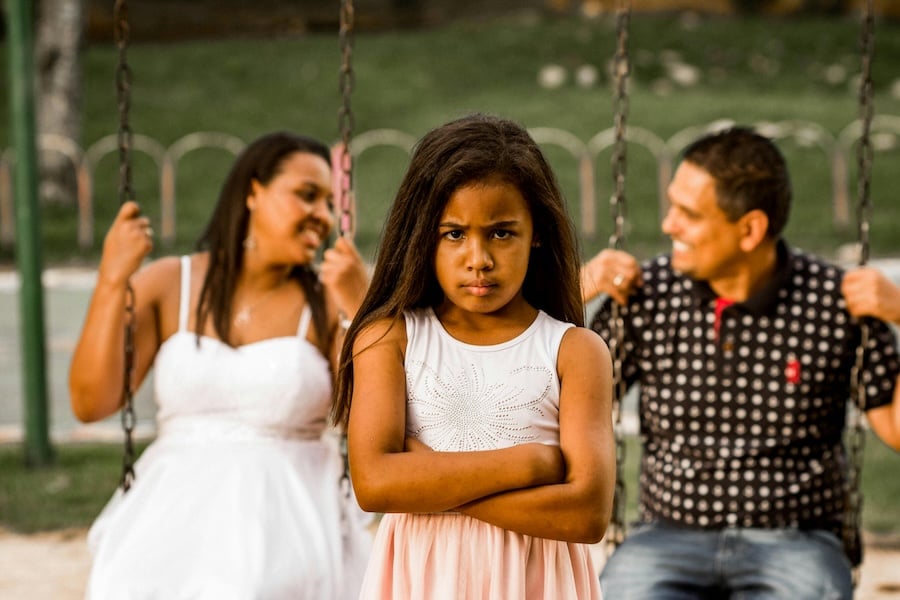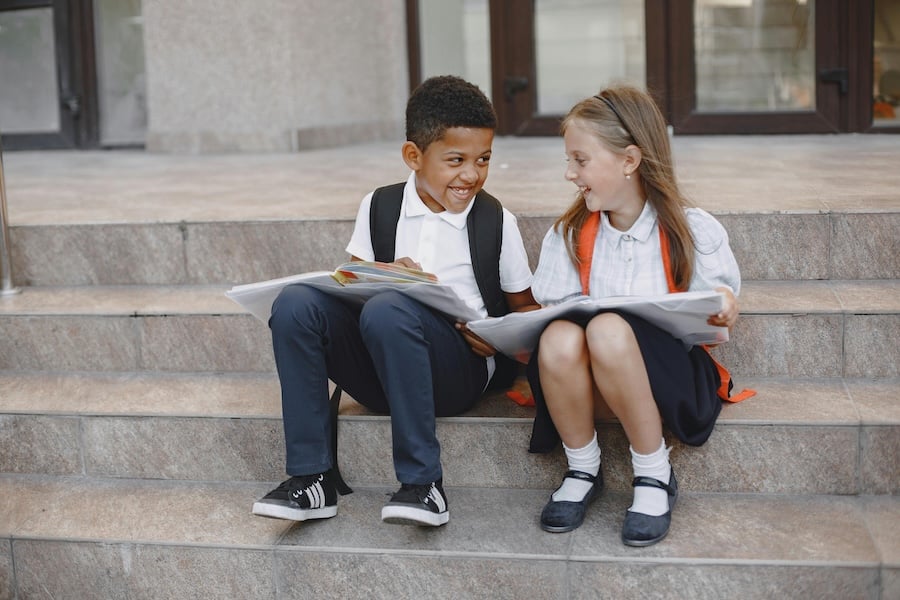
Teaching Emotional Vocabulary for Kids: Helping Kids Name Their Feelings
When a child melts down over a broken pencil or withdraws in the middle of a group activity, what’s really going on? Often, they’re experiencing big feelings—frustration, embarrassment, sadness—but they may not yet have the words to name those emotions. It is up to the adults to teach emotional vocabulary for kids
By helping children build emotional vocabulary, we’re giving them the tools they need to better understand themselves and others. This kind of language development isn’t just about words—it’s about self-regulation, empathy, and emotional resilience.
Why Emotional Vocabulary for kids Matters
For kids, feelings can be overwhelming. When they don’t know how to describe what they’re experiencing, emotions may come out in physical ways—yelling, hitting, shutting down—or even become internalized as stress or anxiety.
That’s why teaching emotions isn’t just for the counseling office. It belongs in every classroom and home. A rich emotional vocabulary helps students:
- Express themselves clearly and calmly
- Recognize how emotions influence behavior
- Identify needs and communicate them constructively
- Feel seen, understood, and safe
Emotional vocabulary is a cornerstone of Social Emotional Learning and a foundational element of programs like Soul Shoppe’s Tools of the Heart, which help children develop emotional awareness and interpersonal skills.
Naming Feelings Builds Self-Awareness
Self-awareness is one of the five SEL competencies. When we teach kids to identify feelings—like disappointment, pride, anxiety, or joy—they begin to understand their own emotional patterns. This awareness allows them to pause before reacting, reflect on their needs, and respond with more care.
And because emotions often hide under the surface of behavior, building vocabulary gives kids access to what’s really going on inside.
Fun and Engaging Ways to Build Emotional Vocabulary
1. Use a Feelings Chart Daily
Visual tools help kids bridge the gap between internal experience and language. Post a Feelings Chart near the classroom door or circle time rug. Make it a part of the routine:
- “Check in: Which feeling are you today?”
- “Choose one word from the chart that fits how you felt during math time.”
Soul Shoppe’s Feelings Poster is a great resource that invites kids to move beyond just “happy” and “sad” and expand their emotional vocabulary with dozens of nuanced terms.
2. Play Naming Feelings Games
Make emotional learning playful with quick games like:
- Feelings Charades – Act out a feeling and have classmates guess
- Emotion Detective – Read a short story and have students identify how characters might be feeling
- Matching Games – Match faces or emojis to emotion words
These naming feelings activities give kids safe ways to explore and experiment with emotional language.
3. Journal with Emotion Prompts
Writing or drawing helps kids process experiences. Try reflection prompts such as:
- “Today I felt __ because __.”
- “One time I was really proud of myself was when…”
- “A moment that felt tricky today was…”
Pair this activity with calming support from Tools of the Heart, which equips students to check in with their emotions and problem-solve from a grounded place.
4. Model the Language Yourself
Children learn best by example. Use emotional vocabulary in your own language, like:
- “I’m feeling frustrated because the schedule changed unexpectedly.”
- “I’m noticing I feel calm after our breathing time.”
This type of teaching emotions in real-time helps normalize feelings as part of the learning experience and builds emotional safety.
5. Create an Emotion Word Wall
Just like a sight word wall, build an SEL emotion words wall. Rotate words weekly and incorporate them into classroom discussions:
- “Has anyone ever felt overwhelmed?”
- “What do you do when you’re feeling proud?”
Celebrate when students use new emotional vocabulary in conversation—just like you would academic language.
Linking Emotional Language to Behavior
When students can name what they feel, they can begin to connect emotion to action:
- “I felt embarrassed, so I shut down.”
- “I was excited, so I couldn’t stop moving.”
These connections are essential for self-regulation and relationship building. When kids recognize that feelings drive behavior, they gain the power to pause, reframe, and choose how to respond.
This aligns directly with Soul Shoppe’s Elementary SEL Curriculum, which teaches students how to navigate conflict, manage stress, and lead with empathy.
The Bigger Picture: Emotional Literacy for Lifelong Success
Emotionally literate children:
- Build stronger friendships
- Experience less conflict and anxiety
- Focus better in class
- Show greater resilience during stress
By teaching emotional vocabulary for kids, we’re not just helping them manage the moment—we’re giving them a lifetime skill. Emotional language is the bridge between what’s felt and what’s understood, and it allows children to feel seen, safe, and supported.
Start with One Word
You don’t have to overhaul your whole classroom to begin. Choose one new feeling word per week. Reflect on it. Play with it. Use it in stories. Make it stick.
And remember: emotional learning doesn’t compete with academic success—it enhances it.
When we help students name what they feel, we help them navigate their world with greater empathy, confidence, and connection.

Growth Mindset Lessons That Stick
In today’s classrooms, one of the most powerful tools we can offer children is the ability to believe in their own potential. That’s the heart of a growth mindset—the belief that abilities and intelligence can be developed through effort, reflection, and resilience.
By integrating simple, consistent growth mindset activities for kids, educators help students take on challenges, learn from mistakes, and develop the inner tools they need to thrive—not just in academics, but in life.
What Is a Growth Mindset activities for kids, and Why Does It Matter?
Coined by psychologist Carol Dweck, a growth mindset contrasts with a fixed mindset. While a fixed mindset assumes our intelligence and talents are static, a growth mindset empowers students to see their learning as a work in progress: “I’m not there yet, but I can get there.”
Helping children develop a mindset for learning builds motivation, engagement, and emotional stamina. It teaches them that effort counts, challenges are welcome, and failure is simply part of growing.
It also aligns directly with social emotional learning, which emphasizes emotional awareness, resilience, and strong interpersonal skills—all crucial for navigating school and life.
Growth Mindset in the Classroom: The Role of SEL
A growth mindset doesn’t happen by accident. It’s cultivated through culture, language, and intentional teaching practices.
That’s where Social Emotional Learning (SEL) comes in. SEL lays the foundation for students to navigate frustration, reflect on effort, and recognize that mistakes aren’t personal—they’re growth opportunities.
Soul Shoppe’s Tools of the Heart curriculum helps educators equip students with these skills every day. When we allow kids to name their emotions, build relationships, and set goals, we’re also building their capacity to believe in their own growth.
Classroom Activities That Build Growth Mindset
Here are a few proven growth mindset activities for kids that help students internalize this powerful belief system:
1. The Power of “Yet”
Teach students to reframe defeatist thoughts with a single word: yet.
- “I can’t do long division” becomes “I can’t do long division yet.”
- Celebrate attempts, not just successes.
- Post “Power of Yet” reminders around the room.
This reframing helps students build positive self-talk and stay motivated even when learning is hard.
2. Mistake Celebrations
Normalize error-making as a valuable part of learning:
- Host “mistake of the week” moments where students can share something they learned from.
- Use class discussions to reflect on growth after challenges.
- As the teacher, model your own mistake recovery with openness and humor.
In SEL terms, this helps reduce shame and builds resilience.
3. Growth Journals
Reflection is key to growth mindset development. Create simple weekly journaling routines using prompts like:
- “One thing I struggled with and kept trying…”
- “What did I learn from a mistake this week?”
- “Something I can do now that I couldn’t do last month…”
Pair this with Tools of the Heart exercises that encourage emotional awareness and perseverance.
4. Fixed vs. Growth Mindset Sorting
Playfully help students learn the difference between fixed and growth statements:
- Fixed: “I’m just not good at this.”
- Growth: “I can keep improving with practice.”
Make this a small-group game, or turn it into an anchor chart students can revisit during tough moments.
5. Growth Mindset Affirmations
Create morning rituals with daily affirmations:
- “I grow through effort.”
- “I can do hard things.”
- “Every mistake helps me learn.”
This pairs beautifully with Soul Shoppe’s Elementary SEL Curriculum, which supports students in building both confidence and compassion.
Book-Based Mindset Lessons
Books offer a powerful way to model growth mindset for students. Try these titles to spark reflection and discussion:
- The Most Magnificent Thing by Ashley Spires
- The Dot by Peter H. Reynolds
- Giraffes Can’t Dance by Giles Andreae
After reading, prompt students with:
- What challenge did the character face?
- What mindset helped them?
- Have you ever felt the same?
Building a Culture of Perseverance
To truly teach a growth mindset, we have to model it ourselves and build systems that reward effort, not perfection. Try:
- Praising process, not just product: “I see how hard you worked on that!”
- Encouraging self-reflection after mistakes, not shame.
- Giving space for do-overs and revision.
Soul Shoppe’s approach to Social Emotional Learning blends seamlessly with these efforts, giving kids a safe place to try again, speak their truth, and bounce back with support.
Quick Growth Mindset Wins for the Classroom
- Post quotes from athletes, artists, or scientists about how they learned from failure.
- Use “Failure Fridays” to share something that didn’t go right—and what came next.
- Introduce a “What did you try today?” wall where effort gets recognized.
- Pair growth mindset lessons with Planet Responsibility, helping students take ownership of their choices and progress.
Growth Mindset Grows Community
When students understand that learning is a journey, not a destination, they become more willing to collaborate, more compassionate toward themselves and others, and more invested in their own progress.
By weaving together growth mindset, SEL, and simple, developmentally appropriate strategies, we help kids believe in their power to change, grow, and thrive—no matter what challenges come their way.
Let’s create classrooms where perseverance, mistakes, and hope are all part of the plan.

Choice-Making Activities: Giving Kids a Voice
When kids are empowered to make choices—big or small—it sends a powerful message: your voice matters. Choice-making nurtures independence, builds self-confidence, and helps children grow into thoughtful decision-makers. In both classrooms and homes, offering children opportunities to practice making choices in safe, supported ways lays the foundation for lifelong emotional and social success.
Let’s explore choice-making activities and how they help children build self-trust, independence, and responsible decision-making—one confident “yes” at a time.
Why Choice-Making Is Important in Social Emotional Learning (SEL)
In the world of social-emotional learning, choice-making activities help students:
- Develop self-awareness: “What do I need right now?”
- Practice self-management: “How will my choice affect me or others?”
- Strengthen responsible decision-making: “What are the possible outcomes?”
- Build confidence: “I trust myself to make good choices.”
These aren’t just important skills for school—they’re skills for life.
How Small Choices Build Big Confidence
Children often have decisions made for them, from daily routines to behavior expectations. But when they’re given age-appropriate autonomy, they become more engaged, more responsible, and more willing to participate meaningfully.
Here are some examples of small but meaningful classroom choices that give students a voice:
- Activity order: “Would you like to do writing or math first?”
- Group roles: “Which job would you like in your team?”
- Calming strategies: “Do you want to use the Peace Path or take a mindfulness break?”
- Creative expression: “Would you rather draw or write in your journal today?”
These simple moments of empowerment allow children to feel ownership over their actions—and more importantly, their growth.
Choice-Making and Emotional Regulation
Making choices is closely tied to emotional regulation. When students feel anxious, overwhelmed, or upset, offering a regulated choice can de-escalate tension and redirect attention to solutions.
Example: A child feels frustrated during a group project. A teacher might offer:
“Would you like to take a walk or sit in our quiet corner for a moment?”
This gives the child control over their emotions without punishment, helping them return to learning with a calmer, clearer mind.
Choice-Making Activities to Try in the Classroom
Here are some classroom-friendly choice-making activities that support social-emotional growth:
The Choice Wheel
Create a colorful wheel or chart with different calming, learning, or break-time options. Students spin or choose when they need a brain or emotion break.
“Would You Rather?” SEL Edition
Pose lighthearted but meaningful questions: “Would you rather talk about your feelings or draw them?”
This game encourages introspection and ownership of expression.
The Choice Journal
Give students daily or weekly prompts that ask them to reflect on a choice they made and what they learned from it.
Classroom Jobs Voting
Instead of assigning roles, let students vote or volunteer for classroom responsibilities, promoting fairness, accountability, and using their voice.
Mindful Moments Menu
Offer a list of calming strategies students can pick from when they need a break. This could include breathing, listening to music, stretching, or using a stress ball.
Try the Tools of the Heart curriculum for even more ideas on teaching self-awareness and decision-making in the classroom.
Linking Choice-Making to SEL Core Competencies
- Self-Awareness: Kids learn to identify what they need.
- Self-Management: They gain tools to handle emotions.
- Responsible Decision-Making: They think through outcomes.
- Social Awareness: They consider how choices affect others.
- Relationship Skills: They practice collaboration and compromise.
Every small moment of choice-making is a step toward mastering these competencies.
Extending Choice-Making to Home and Family Life
Parents and caregivers can use the same ideas to encourage autonomy at home:
- “Would you like to brush your teeth before or after your story?”
- “Which snack would fuel your brain better?”
- “What would help you feel better right now: quiet time or a hug?”
Even these everyday options teach children the power of their voice.
Tools That Support Student Choice
Soul Shoppe’s programs are designed to help educators and families foster emotionally intelligent, choice-ready kids. Explore:
Empowerment Begins with Trust
When we give kids room to choose, we’re saying: I believe in you. That belief goes a long way. As children practice choice-making, they begin to understand that mistakes aren’t failures—they’re part of growing. They learn that their thoughts and feelings matter. And they begin to build the self-trust and emotional resilience that lasts a lifetime.
Let’s raise voices by offering choices.

In every classroom, students are carrying invisible emotions. Some may be quietly excited about a family event. Others might be anxious about a spelling test, a friend conflict, or something bigger that they can’t quite name. So at Soul Shoppe we suggest daily check-ins for students.
Daily check-ins for students create space to acknowledge those feelings—good, bad, and everything in between. These moments of reflection are more than just routine; they’re powerful tools for building self-awareness, resilience, and student confidence.
Why Daily Check-Ins Matter
Children thrive on connection and predictability. Starting or ending the day with a consistent classroom morning check-in (or afternoon reflection) provides:
- Emotional safety: Students feel seen and heard.
- Routine: Predictable structure builds trust.
- Self-expression: Kids learn to identify and name emotions.
- Confidence: When kids can reflect and be acknowledged, their sense of self grows.
These moments also provide valuable insight for teachers. You’ll quickly notice when a student is off, stressed, or needs support—all before it turns into a behavioral disruption or learning block.
Check-ins are a simple but powerful way to weave Social Emotional Learning into the rhythm of your classroom.
Daily Check-In Ideas to Boost Connection and Confidence
Here are easy-to-implement, meaningful activities that support daily check-ins for students—helping them feel emotionally grounded and ready to learn.
1. Mood Meters
Mood meters offer a visual way for kids to identify how they feel. These tools often include colors or quadrants representing energy and pleasantness (e.g., red = high energy, unpleasant; blue = low energy, unpleasant).
Encourage students to:
- Point to their mood
- Say one sentence about it
- Offer a strategy to shift or embrace that feeling
Using a mood meter builds emotional reflection skills while normalizing the full spectrum of emotions.
2. “One Word” Circles
Gather the class in a circle and invite each student to share one word to describe how they’re feeling. You might guide with a sentence stem like:
“One word for how I’m feeling today is…”
It’s quick, inclusive, and gives every voice a chance to be heard.
This strategy, often used in Tools of the Heart lessons, reinforces self-awareness while building classroom community.
3. Digital Polls and Feeling Surveys
For tech-friendly classrooms or upper grades, try tools like Google Forms, Padlet, or digital emojis where students can check in privately.
Benefits include:
- Quiet reflection time
- Safe space for introverted students
- Real-time insight for teachers
Use polls to ask about energy levels, excitement, challenges, or how students felt during a specific lesson. It helps them build reflection muscles and creates opportunities for follow-up support.
4. Feelings Chart or Poster
Place a Feelings Poster in a visible space. At the start or end of the day, ask:
- “Choose a feeling word from the chart that fits you today.”
- “Did your feelings shift from morning to now?”
This simple routine builds emotional vocabulary and helps students learn that feelings are natural, fluid, and worth naming.
5. Confidence Boost Cards
Have students write short affirmations or appreciations to themselves or peers:
- “I tried something hard today.”
- “I noticed that I stayed calm even when I was frustrated.”
- “You helped me in group work—thank you.”
These quick notes can be posted, journaled, or placed in a “Confidence Jar.” When students reflect on their progress, they internalize growth and strengthen resilience.
6. “Rose, Thorn, Bud” Reflections
This classic activity invites kids to share:
- Rose: A highlight
- Thorn: A challenge
- Bud: Something they’re looking forward to
It supports emotional reflection exercises and shows kids that life includes ups, downs, and things yet to bloom. Plus, it fosters empathy as students hear one another’s stories.
How Daily Check-Ins Build Confidence
When students are invited to pause, reflect, and speak about their experiences regularly, several things happen:
- They learn their voice matters.
- They grow trust with peers and adults.
- They practice emotional vocabulary and perspective-taking.
- They begin to see themselves as resilient and capable.
These micro-moments of reflection are foundational to developing lifelong skills like self-advocacy, compassion, and focus.
Through daily check-ins, students aren’t just asked “How are you?”—they’re being taught how to answer.
Integrating Check-Ins into SEL Curriculum
Soul Shoppe’s Elementary SEL Curriculum naturally supports check-in routines. Lessons incorporate tools like:
- I-Feel Statements
- Peace Path strategies
- Body and brain calming tools
- Reflection on social-emotional challenges
Adding check-ins before or after an SEL lesson creates space for deeper processing and connection. These routines complement academic learning and create a classroom culture rooted in respect and emotional safety.
Small Moments, Big Impact
Confidence isn’t built in one lesson—it’s cultivated daily through consistent, caring moments. Morning check-ins, mood meters, and “one word” shares may seem small, but over time they shape how students see themselves and each other.
By incorporating daily check-ins for students, we help kids start each day with intention and end it with reflection. That sense of ownership and emotional awareness becomes the groundwork for everything else—learning, empathy, and leadership.

School can be full of joy, growth, and discovery—but it can also bring stress. Tests, social pressures, transitions, and even loud or overstimulating environments can all overwhelm a child’s emotional system.
The good news? Stress management is a teachable skill. And when kids learn healthy ways to manage stress early, they build habits that support emotional well-being for life.
Let’s explore stress management activities for students that are simple, age-appropriate, and rooted in everyday classroom routines. These strategies not only help children feel more balanced but also improve focus, classroom engagement, and overall learning outcomes.
Why Stress Management Matters in Elementary School
Stress doesn’t only show up as tears or tantrums. It can look like:
- Withdrawing from peers
- Acting out or disrupting class
- Zoning out or appearing disengaged
- Complaining of headaches or stomachaches
Without support, chronic stress can impact a child’s ability to learn, concentrate, and build relationships. That’s why it’s essential to give kids tools they can use—not just when things boil over, but before stress takes hold.
That’s where Social Emotional Learning comes in. By weaving SEL into the school day, educators help students build awareness, practice emotional regulation, and make choices that align with well-being.
Explore our full Elementary SEL Curriculum and Social Emotional Learning resources for deeper integration of wellness strategies.
Stress Management Activities for Students (Grades K–6)
Here are low-prep tools you can use right away to help students calm their bodies, focus their minds, and process emotions in developmentally appropriate ways.
1. Movement Breaks
Short bursts of movement help release pent-up energy and regulate the nervous system. Try:
- Stretching arms to the ceiling and wiggling fingers
- Cross-body taps or “brain buttons”
- Simple yoga poses like “tree” or “child’s pose”
- Silent disco (dancing in place with invisible music)
Why it works: Movement resets the body’s stress response and helps bring students back to center.
2. The “Stress Thermometer” Check-In
Create a visual chart with levels of stress from 1 (calm) to 5 (overwhelmed). Invite students to identify where they are and pick a calming activity accordingly. This builds self-awareness and encourages autonomy.
Pair it with our Tools of the Heart program for even more emotional regulation strategies.
3. Journaling & Drawing Emotions
Offer short journaling time or reflection sheets with prompts like:
- “Something that helped me today was…”
- “Right now, I feel ______ because ______.”
- “One thing I can do when I feel stressed is…”
For younger students, use an “emotion wheel” or feelings chart and let them draw their mood.
Tip: Link to our Feelings Poster to support emotional vocabulary.
4. Visualization and Breathing
Teach students to imagine a calm place (like a beach or peaceful forest) while taking deep breaths. Try “box breathing” (inhale 4, hold 4, exhale 4, hold 4) or simple “smell the flower, blow out the candle” breathing.
This helps students develop calming techniques in the classroom they can return to when emotions feel big.
5. Coping Cards
Have students create small “coping cards” with reminders of things that help them feel calm (hugging a stuffed animal, taking deep breaths, counting to 10, etc.). Keep these in a “Calm Down Corner” or desk pouch for quick access.
These make abstract coping skills for kids more concrete and personal.
Building a Wellness Routine Into the School Day
Stress management becomes second nature when it’s woven into daily rhythms. Here’s how you can build a culture of calm without adding more to your plate:
- Morning Meetings: Start the day with a short SEL check-in or calming ritual.
- Quiet Time After Lunch: Offer 5 minutes for silent drawing, reading, or breath work.
- Closure Activities: End each day with a gratitude circle or mindfulness minute.
Consistency builds emotional safety. Over time, these micro-moments add up to real behavioral shifts.
Family Partnership: Extending Wellness Home
Stress doesn’t stop at the school gate. Empower families to reinforce strategies at home:
- Send home wellness tips or breathing exercises
- Offer a simple stress journal page for weekend reflection
- Share the Tools of the Heart link with caregivers
When kids see stress managed consistently at school and at home, they begin to trust that they are capable of handling hard things.
Stress Is a Signal—Not a Failure
We don’t need to eliminate stress. What we can do is help children recognize it early, respond to it kindly, and return to calm with confidence.
By teaching students how to identify stress and respond with tools—not shame or silence—we prepare them not just for school, but for life.
With programs like Elementary SEL Curriculum and daily practices grounded in empathy and emotional awareness, we can make stress just another part of growing up—not something that holds kids back.






